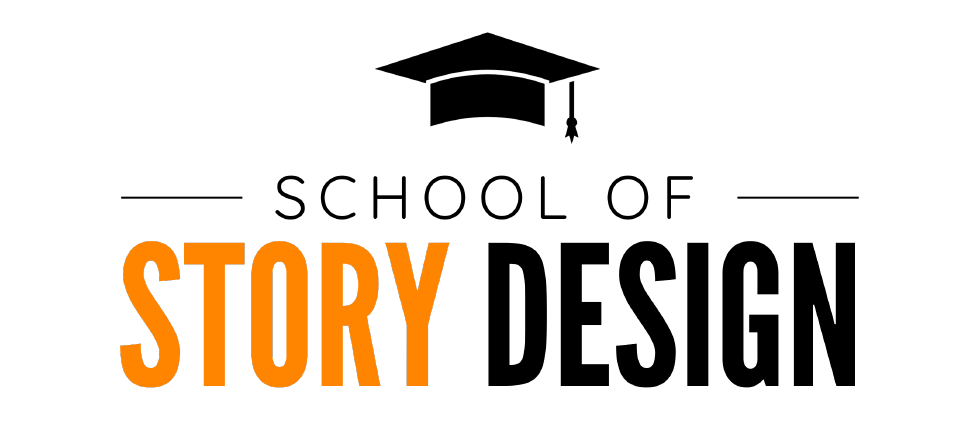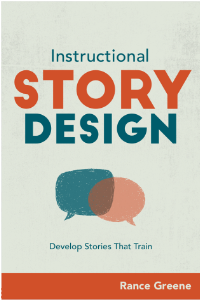Humanize This Space
Jun 1
/
Rance Greene
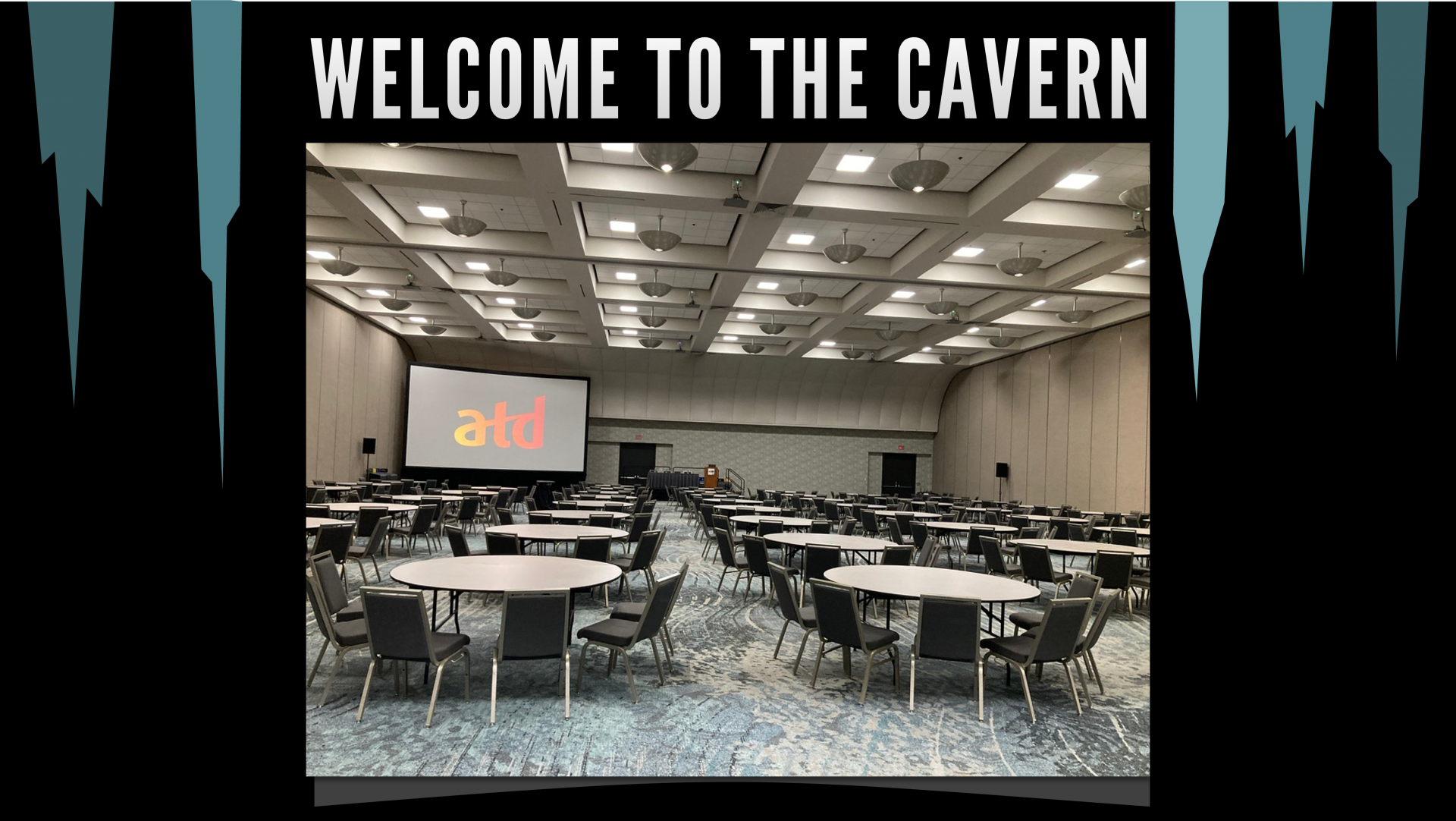
I walked into the room where I was presenting. It was cavernous...impersonal.
"Alright," I said under my breath, "at least we've got tables."
I enjoy speaking at conferences. The Association for Talent Development's (ATD) International Conference is a favorite, because I get to learn from a lot of my friends and make connections with many new ones. ATD23 was exciting. It felt like a pre-COVID conference. 9,000 talent development professionals from all over the world gathered to share, learn and grow.
As with any large conference, there's the other side: You can feel like a faceless number among the crowd.
Speakers are not immune to this. Sometimes conference speakers can fall into the trap of furthering the dehumanizing effect of large numbers and huge spaces. Here are some common pitfalls:
"I need to cram as much content as possible into this hour."
"If I use lots of polls, they will stay engaged."
"I just need to keep my energy up for them to stay with me."
"If I give them the facts, there's no way they won't take my message to heart."
"If I use lots of polls, they will stay engaged."
"I just need to keep my energy up for them to stay with me."
"If I give them the facts, there's no way they won't take my message to heart."
We've all fallen into this mindset at some point when we've been called upon to "present." It's understandable. In some ways, speakers are set up to conduct their sessions with this mindset. They are asked to upload their slide deck to the conference site because it "makes for a better learning experience." They are told that they may or may not have a certain room set-up and should be prepared to present from the stage. They are placed in a large room with 200+ attendees and given pointers on how to engage participants digitally. On top of all that, they want it to be practical. It's a big ask.
Go against the tidal wave
How does one facilitate a humanized learning experience when all of these factors are pushing toward a standard "sit-and-get" presentation? In my session, entitled "Story Design: A foundationally human approach to instruction," I decided to deal with this head-on:
"Look around. What are some of the potential barriers in this room that could prevent this session from being a humanized experience?" I asked.
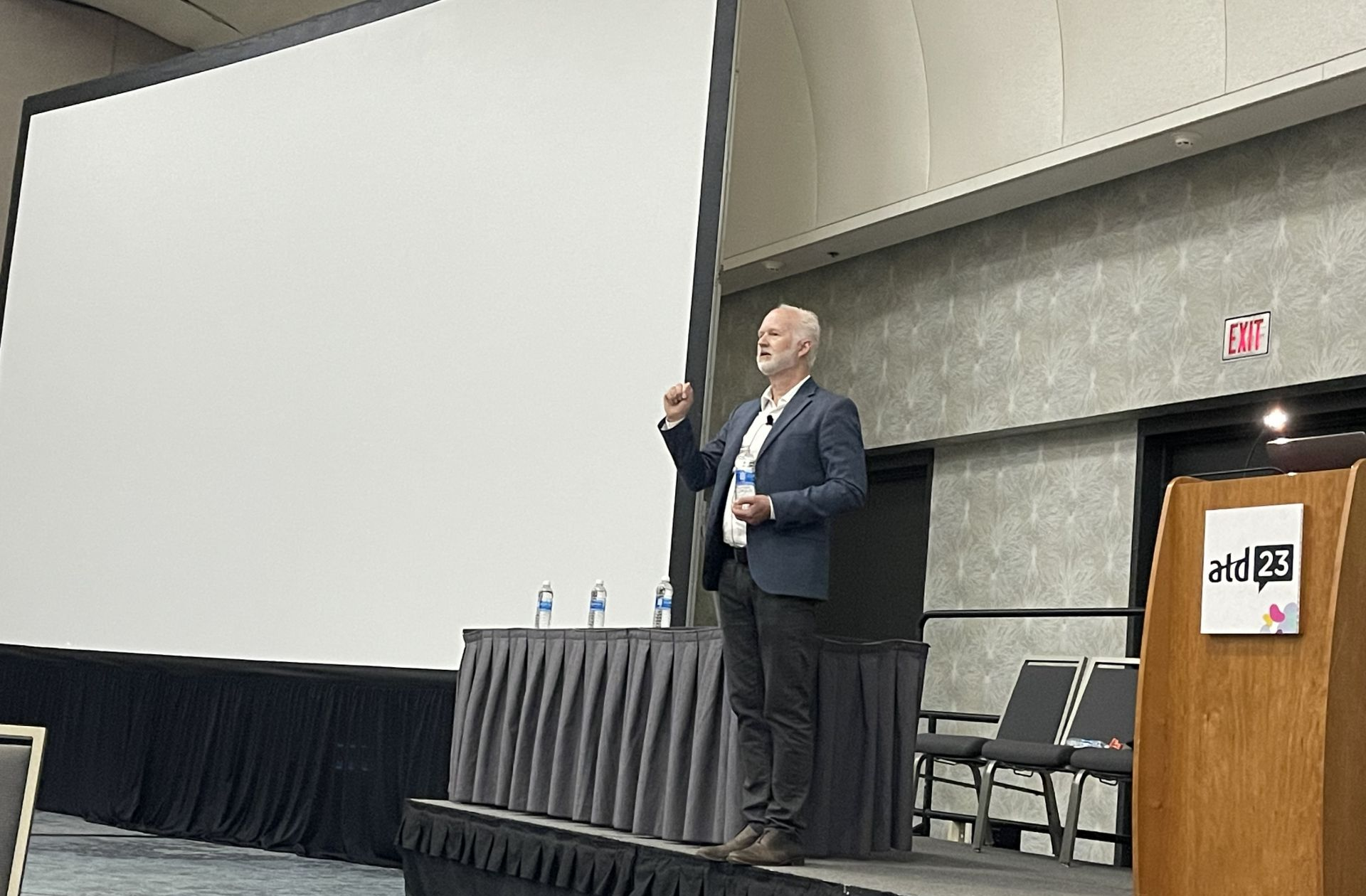
I had an audience of about 200. Here's how they answered, followed by my responses:
"We come from different backgrounds."
"True, we are from different industries, overseeing a variety of talent development programs, but we'll use that to our advantage today. During our discussions, let's be open to hear one another's diverse perspectives."
"We're spaced far apart."
"Yes, even though there are many of us in this room, it's a very large space and we are far apart from others. However, there are other humans sitting at your table, so we'll maximize the proximity of those people so you can connect meaningfully to them and gain insights from this smaller group. We'll also have opportunities to learn from the larger group."
Later, I led them through an exercise where each table wrote what they were doing to humanize the workplace on a sticky note and place it on flip chart paper in the back of the room. As they left, they took photos of the ideas of their peers. (See below.)
Later, I led them through an exercise where each table wrote what they were doing to humanize the workplace on a sticky note and place it on flip chart paper in the back of the room. As they left, they took photos of the ideas of their peers. (See below.)
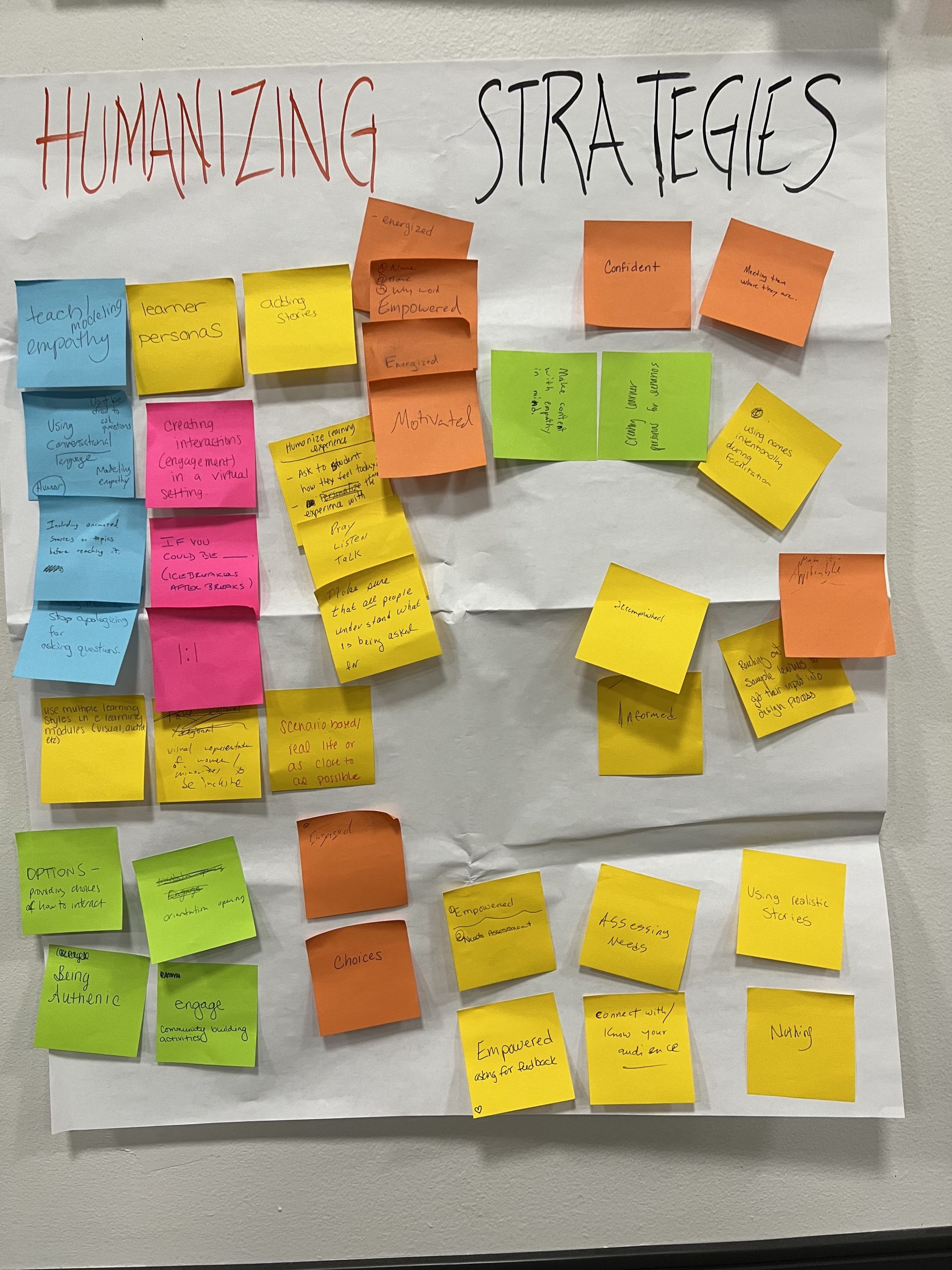

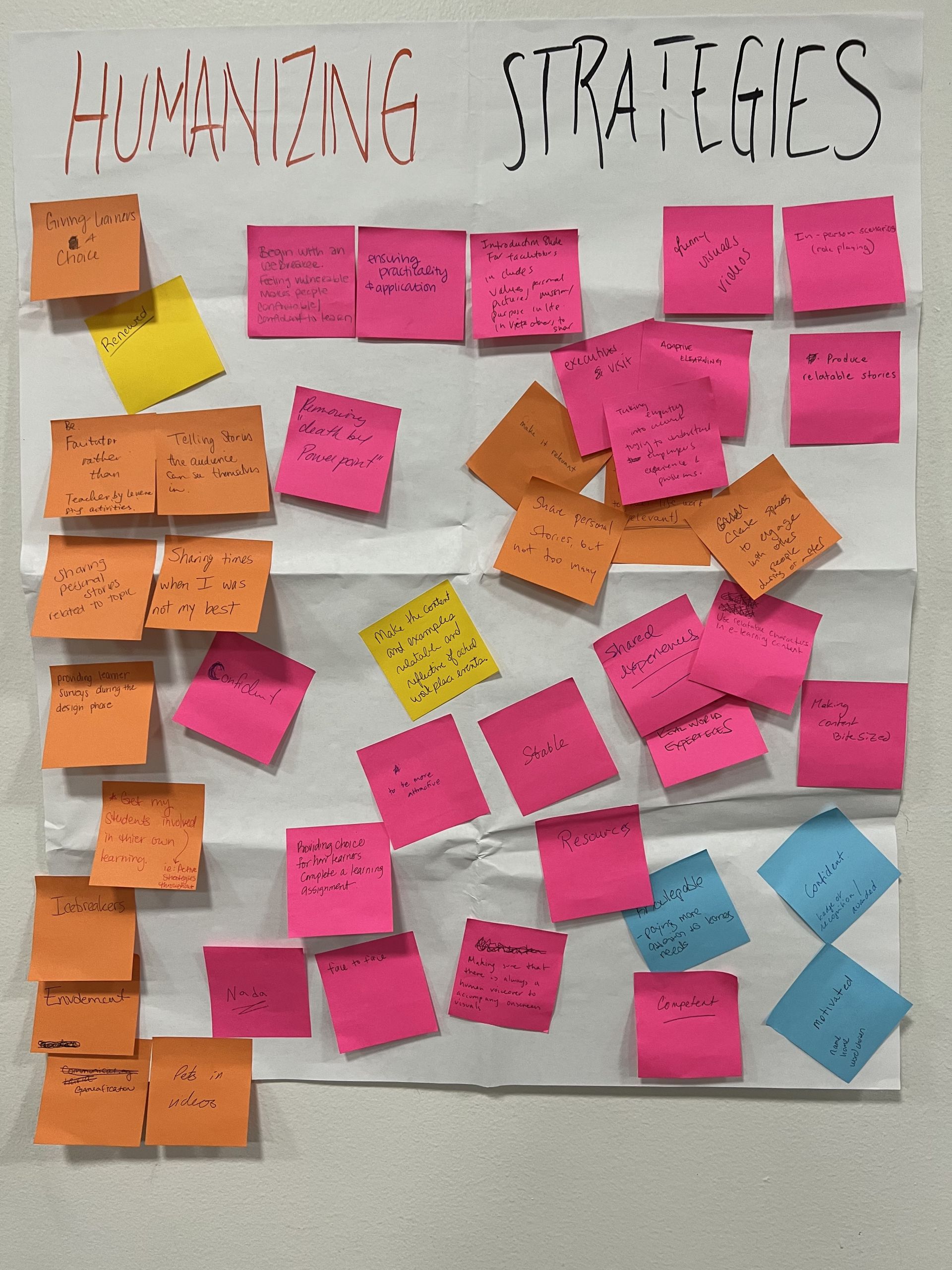
"We are reeling from the fast pace of this conference."
"Alright, why don't we take 20 seconds for silence...."
20 seconds later, I didn't want to break the silence. It was surprisingly rejuvenating!
20 seconds later, I didn't want to break the silence. It was surprisingly rejuvenating!
"Cognitive overload!"
"Agreed. We've all been packing our brain with a lot of new ideas, so we'll keep this session focused on mastering one thing."
I waited to see if there were any more barriers, then looked to my right:
"Potentially, there's a very large barrier to my right. A screen that's 20 times bigger than the human standing on this stage."
A woman in the back raised her hand. "I was just going to say that. You're the first person at this conference that has turned off the PowerPoint." Surprisingly, the room erupted in applause. (Pro tip for speakers: If you want a huge round of applause, just turn off the projector.)
"I promise that we'll only use PowerPoint when visual support is absolutely needed. Otherwise, I'll keep it off." (In the photo above you'll notice that I had a blank black slide projected onto the screen. What a relief not to have to compete with an enormous flat screen!)
A woman in the back raised her hand. "I was just going to say that. You're the first person at this conference that has turned off the PowerPoint." Surprisingly, the room erupted in applause. (Pro tip for speakers: If you want a huge round of applause, just turn off the projector.)
"I promise that we'll only use PowerPoint when visual support is absolutely needed. Otherwise, I'll keep it off." (In the photo above you'll notice that I had a blank black slide projected onto the screen. What a relief not to have to compete with an enormous flat screen!)
Making good on humanizing
After acknowledging the possible barriers to humanizing our time together, I led them through several exercises and discussions...even a poll...that helped them wrestle with making the concept of humanizing instruction concrete. I shared a story. I asked many questions. It wasn't until 3:35 (the session had started at 3:00) that I began training on Story Design, a specific method for humanizing the learning experience. Since I had been modeling Story Design throughout the entire session, they had already been observing, critically thinking and solving problems. It was easy to train them on the process, because they had just experienced it.
At the end of our time together, I asked them if they felt like the first 35 minutes of our time was wasted?" A resounding, "No!" They felt refreshed, connected to the people around them, empowered to make a difference in their own learning experiences.
At the end of our time together, I asked them if they felt like the first 35 minutes of our time was wasted?" A resounding, "No!" They felt refreshed, connected to the people around them, empowered to make a difference in their own learning experiences.
What are your barriers?
"I don't have time to come up with these kinds of humanizing activities." "You can't replicate this for virtual or elearning!" "Our company culture is restrictive."
We are in the business of solving problems. There is always a humanized way for instruction if we'll take a little time to name the barriers. No matter what venue, no matter what your time constraints, no matter what company you work for, there is a creative solution just beneath the surface.
-
In a word or phrase, describe how you want learners to feel as a result of the experience
-
Name the potential de-humanizing barriers
-
Think of 2 ways to overcome each barrier (on your own or with your team)
-
Design activities that will help learners self-discover what you're training them to do, give them practice and, of course, produce the targeted feeling.
You won't be able to address every single barrier. For instance, one of the participants in my session said, "We're tired!" Yeah, we're not going to have nap time, but the effect of the session was invigorating. So, major on what you can impact and usually the other barriers will be vastly diminshed.
Humanize your learning experiences
If your L&D team is struggling to connect with learners and you just need some guidance to get started, reach out for one-on-one or group coaching or an in-house workshop. Check out Instructional Story Design, an ATD Press best seller!
If you are a speaker and need some help preparing an experience that goes against the tidal wave, you're in the right place. Give us a shout and let's humanize your message with Story Design.

Training comes to life at the School of Story Design. Instructional designers learn how to write, produce and train with stories for meaningful learning experiences.
Copyright © 2025
